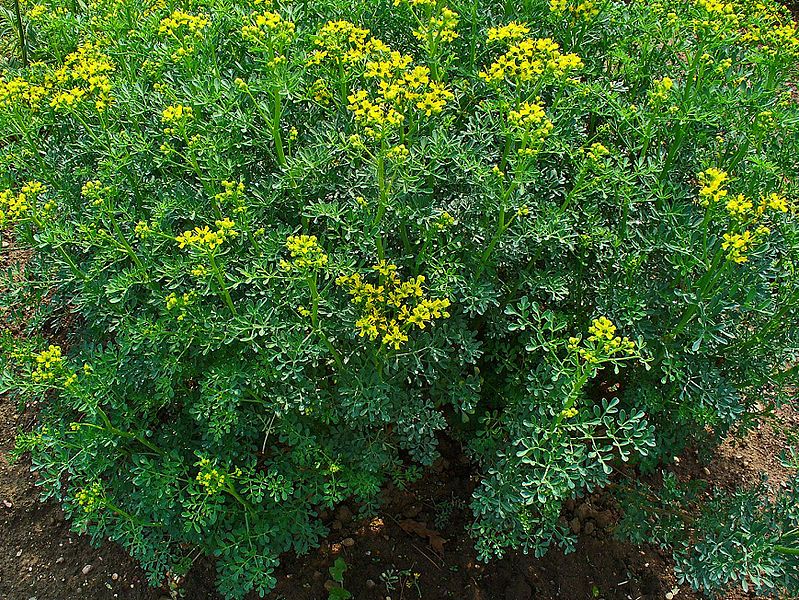Rue (Ruta graveolens) has been known by many names throughout its long history. It has been called common rue, garden rue, German rue, mother of herbs, Herb of Grace and, most memorably, witchbane. It has not been used as a common culinary herb because ingestion of it can cause vomiting, gastric pain and even death. In small quantities, it is used in Ethiopian cuisine, most commonly as a component of berbere . Handling rue can also result in phytophotodermatitis, a painful blistering rash.
Rue is most often used now as an ornamental plant. Its attractive gray-blue foliage can be pruned to make a nice low hedge in formal gardens. Just be sure to wear gloves while pruning to avoid a rash. The smell of rue is intensely disliked by cats so planting rue in your garden should discourage the neighborhood cats from using your garden as a litter box.
Rue was reputed to repel witches, hence its name “witchbane”. People used to hang it in their doors and windows to keep witches out. They also carried it on their persons to keep them safe from witches. They believed that witchbane repelled pestilence, like the plague, and fleas.
Its nickname Herb of Grace refers to its use with Holy Water. Priests used sprigs of rue to shake Holy Water on things that needed to be blessed.
Rue is sub-shrub native to southern Europe. In the US, it is hardy in zones 4 through 8. In colder climates, the plants die to the ground in the winter. Rue is also a drought tolerant plant, making it a good candidate for a xeriscape. It prefers full sun but will tolerate partial shade. Mature plants are 2- to 3-feet tall. They bear small yellow flowers in mid-summer after the second year of growth when grown from seed.
Rue is easy to propagate by division or cuttings. Cuttings should be taken in July or August. Plants will readily self-sow in your garden if you don’t deadhead the flowers. Seeds can be started indoors in late winter or in a cold-frame in early spring. Seedlings can be transplanted into your garden in late spring when the soil has warmed.

